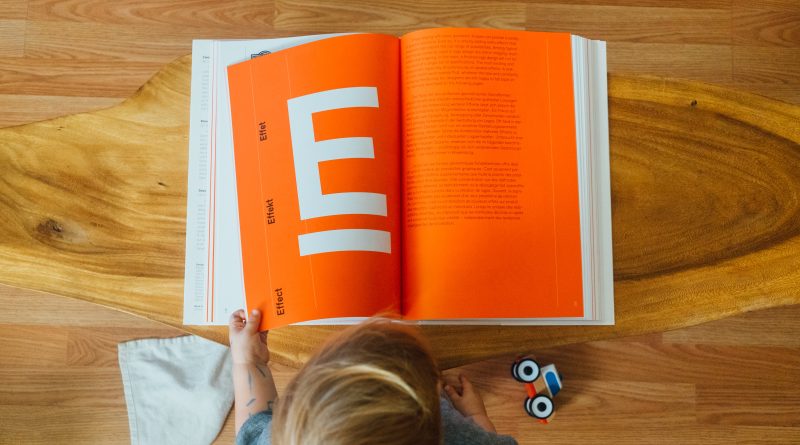Unlock Best Methods For Elevating Phonemic Awareness
In my journey as an elementary education teacher, I’ve always held onto the belief that every child possesses a universe of potential, just waiting to be discovered. Those “aha!” moments, when a child’s eyes light up as they grasp a new concept, are pure magic. Among the many skills I introduce to my students, one stands out as a cornerstone: Phonemic Awareness. This isn’t just a technical term; it’s at the heart of allowing students to unlock the best methods for elevating phonemic awareness. It encapsulates the enchanting ability to recognize and play with individual sounds, or phonemes, in spoken words. The most important part is before our little ones embark on their journey with printed words, they’re already mastering this skill, often without even realizing the magic they’re weaving! For more information on helping children read check out our article: How To Teach Your Child To Read
1. The Early Bird Gets the Worm
I’ve always said, “Start them young!” Introducing phonemic awareness activities as early as preschool can make a world of difference. And guess what? Research backs this up! A study titled “Efficacy of a Supplemental Phonemic Awareness Curriculum to Instruct Preschoolers With Delays in Early Literacy Development” found that early intervention can lead to significant gains in literacy skills. By the time our little stars reach kindergarten, many of them are already shining brightly in their phonemic skills.
2. Engage All Senses
Every child has their unique way of absorbing information. Some are captivated by visuals, others are drawn to sounds, and yet others learn best through touch. This is why I’m a firm believer in multisensory teaching methods. It ensures that every child feels seen and heard in our classroom.
- Sound Mapping with Colors:
- Objective: To associate sounds with colors for a visual connection.
- Activity: As we explore a new phoneme, students choose a color that they feel best represents that sound. Over time, we create a vibrant sound-color chart that serves as a visual aid during lessons
- Phoneme Dance Party:
- Objective: To connect sounds with movement
- Activity: For each phoneme, we have a corresponding dance move. When students hear the sound, they break into the move. It’s a lively way to learn and burn off some energy!
Incorporating multisensory methods like these ensures that learning is not just an intellectual exercise but a holistic experience. Whether it’s through hand gestures that visually represent a concept, sound rhythms that audibly resonate with a lesson, or tactile experiences that physically connect children to their learning, we’re catering to each child’s unique learning style. And in doing so, we’re nurturing a love for learning that will last a lifetime.
3. Dive into Sound Play
Every time I look into the eager eyes of my students, I’m reminded of the boundless joy and wonder that children find in play. Play isn’t just recreation for them; it’s their language, their way of understanding the world. And what better way to teach phonemic awareness than by tapping into this innate love for play?
Sound-play is more than just fun; it’s a bridge to literacy. It’s where the magic of sounds meets the joy of play, creating a vibrant learning experience.
- Phoneme Pop:
- Objective: To help children identify individual sounds in a fun and interactive manner.
- Materials: Balloons with phonemes written on them and some lively music.
- Activity: As the music plays, children dance around, and when the music stops, they grab a balloon. I’ll shout out a word, and if a child thinks their balloon’s phoneme is in that word, they get to pop their balloon! For instance, if I say “cat” and a child has a balloon with the letter ‘c, they can pop it. It’s a delightful explosion of sounds and giggles!
- Sound Bingo:
- Objective: To enhance the children’s ability to recognize and match sounds.
- Materials: Bingo cards with images of everyday objects (like a cat, a bell, or a drum) and sound clips or objects that produce those sounds.
- Activity: Play a sound and have the children identify which object on their card matches that sound. The first one to match a row shouts “Bingo!” It’s a symphony of sounds, from the ringing of a bell to the excited shouts of “Bingo!”
Sound-play isn’t just an activity; it’s a journey into the world of phonemic awareness, one playful sound at a time. To make their sound play even funnier, try these jokes Teacher Jokes For Everyday Of The School Year
4. Mastering Sound Dynamics
Phonemic awareness is the bedrock of reading prowess. Our mission is to craft a learning experience that’s interactive, diverse, and filled with joy. Let’s pave the way for our children’s reading triumph, one sound at a time. Together, we can make a difference in their world.
Oh, the joy of watching our little learners become word wizards! When we guide them to deconstruct words into their core sounds and then assemble them back, it’s like watching a painter mix colors to create a masterpiece. Two activities that have always been a hit in my classroom are:
- Sound Chain:
- Objective: To help students understand the flow of sounds in words.
- Activity: We sit in a circle, and I say a word, emphasizing each sound. The first student repeats the first sound, the next student the second sound, and so on. For “frog”, it would go /f/ – /r/ – /o/ – /g/. It’s a relay race of sounds, and the excitement is palpable!
- Word Building Blocks:
- Objective: To physically build words using blocks.
- Materials: Blocks labeled with different phonemes.
- Activity: Students pick a word card (like “hat”) and then find and stack the blocks in the correct order to build the word. It’s hands-on, it’s fun, and it’s so rewarding to see them build words block by block!
5. Play with Sound Puzzles
Every child loves a good puzzle, and when that puzzle is all about sounds, the learning is amplified. Two of my favorite sound puzzle activities are:
- Sound Substitution Game:
- Objective: To substitute one sound for another in a word.
- Activity: I’ll say a word like “mat” and ask, “What do you get if you change the /m/ to /r/?” The thrill when they shout “rat!” is pure gold.
- Phoneme Flip:
- Objective: To flip the order of sounds in a word.
- Activity: “Let’s flip the sounds in ‘tap’.” The answer? “Pat!” It’s a delightful twist on words, and the kids absolutely love it.
6. Visualize with Elkonin Tools
There’s something so satisfying about seeing abstract concepts take a tangible form. With Elkonin tools, our students get a visual representation of sounds in words. Activities that have been a hit include:
- Sound Box Match:
- Objective: To match objects or pictures to the sounds they represent using Elkonin boxes.
- Materials: Elkonin boxes, small objects or pictures.
- Activity: Students place an object or picture in each box corresponding to its sound. For “cat”, they might place a toy car, an apple, and a toy tiger in the boxes for /c/, /a/, /t/.
- Phoneme Slide:
To find out more information about Elkonin Tools you can visit the National Center on Intensive Intervention Website
7. Rhyme Time
The rhythm and melody of rhymes make them an instant hit with children. They’re not just fun; they’re powerful learning tools. Here are two activities that have my classroom buzzing:
- Rhyme Basket:
- Objective: To find objects that rhyme.
- Materials: A basket filled with objects.
- Activity: I’ll say a word, and students rush to find an object in the basket that rhymes with it. “Find something that rhymes with ‘log’!” And up comes a toy frog!
- Rhyme Charades:
- Objective: To act out rhyming words.
- Activity: Students draw a word card and act it out without speaking, while the others guess the word and its rhyme. It’s a theatrical way to dive into the world of rhymes.
8. The Art of Listening
Listening is more than just hearing; it’s about understanding. And in our bustling classroom, we’ve found ways to make this art come alive:
- Sound Safari:
- Objective: To identify sounds in the environment.
- Activity: We’ll go on a “safari” around the school, listening intently to the sounds around us. Back in the classroom, we discuss and categorize the sounds we heard. It’s an auditory adventure!
- Whispered Words:
- Objective: To focus intently on quiet sounds.
- Activity: Students pair up. One whispers a word, and the other has to segment the sounds they hear. It’s a challenge, but oh, the concentration on their faces is worth it!
9. Hands-on Learning
There’s a tactile joy in handling objects, and when learning is hands-on, it becomes an experience. Two activities that resonate with my tactile learners are:
- Sound Bead Strings:
- Objective: To represent sounds with beads.
- Materials: Strings and beads.
- Activity: For each sound in a word, students thread a bead onto their string. “Ship” would have three beads for /sh/, /i/, /p/.
- Phoneme Clay Play:
- Objective: To mold clay into shapes representing sounds.
- Materials: Playdough or clay.
- Activity: Students mold the clay into shapes or letters representing the sounds in words. It’s a squishy, fun way to play with sounds!
10. Tech in Teaching
Embracing the digital age in our classroom has been a game-changer. The interactive nature of apps and online platforms makes learning phonemic awareness an exciting adventure for our students.
- Virtual Sound Boards:
- Objective: To create words using digital soundboards.
- Activity: Students drag and drop digital phoneme tiles to create words. The immediate auditory feedback when they place a tile correctly is a delightful reinforcement.
- Animated Phoneme Stories:
- Objective: To understand sounds through animated tales.
- Activity: Interactive stories where characters represent different sounds. As the story unfolds, students identify and interact with characters based on their corresponding phonemes.
11. Step-by-Step Learning
Every lesson is a stepping stone, building on the previous one. This gradual approach ensures that our students feel supported and confident at every stage.
- Phoneme Ladders:
- Objective: To climb the ladder of complexity with phonemes.
- Activity: Students start with simple sound recognition tasks at the bottom rung and move up to more complex phoneme manipulation tasks as they ascend the ladder.
- Sound Progress Charts:
- Objective: To visually track the progression of learning.
- Activity: As students master each phonemic skill, they place a sticker on their progress chart. It’s a visual representation of their journey, and they beam with pride seeing their chart fill up!
12. Feedback is Gold
Every word of encouragement, every nod of appreciation, and every constructive piece of advice can shape a child’s learning journey.
- Phoneme Star Awards:
- Objective: To recognize and celebrate mastery of phonemes.
- Activity: When students demonstrate proficiency in a particular phonemic skill, they receive a star sticker. It’s a small token, but the pride in their eyes is immeasurable.
- Growth Journals:
- Objective: To reflect on feedback and chart growth.
- Activity: Students maintain journals where they note down feedback and reflect on their learning experiences. It’s a beautiful way to see their growth in their own words.
13. Blend with Phonics
Marrying phonemic awareness with phonics is like combining melody with lyrics in a song. The result is harmonious and holistic reading education.
- Sound-Letter Maps:
- Objective: To link sounds to their corresponding letters.
- Activity: Using interactive maps, students match phonemes to their written counterparts. It’s a tactile way of understanding the sound-letter relationship.
- Phonics Storytime:
- Objective: To integrate phonemic awareness with phonics through stories.
- Activity: Reading tales where specific phonemes are highlighted and linked to their corresponding letters. It’s storytelling with an educational twist!
14. Short & Sweet Wins
Our activities are designed to be bite-sized bursts of fun and learning, ensuring our vibrant little learners stay engaged and intrigued.
- Phoneme Flash Challenges:
- Objective: Quick challenges to identify or manipulate sounds.
- Activity: I flash a card with a word or sound, and students have a few seconds to respond. It’s quick, it’s fun, and it’s super engaging!
- Sound Bingo:
- Objective: A fast-paced game to recognize sounds.
- Activity: Students have bingo cards with different phonemes. I call out words, and they mark the corresponding sounds. The first to get a line shouts “Bingo!” It’s a classroom favorite.
15. Practice Makes Perfect
Consistency is the key to mastery. With daily drills and practice sessions, our students reinforce their skills and build a strong foundation.
- Daily Sound Drills:
- Objective: To reinforce phonemic skills.
- Activity: Starting each day with a quick drill where students identify, segment, or blend sounds. It sets the tone for a day filled with phonemic exploration.
- Sound of the Day:
- Objective: To focus on one sound each day.
- Activity: We pick a phoneme for the day, and throughout the day, we explore words containing that sound. It’s a deep dive into one sound at a time.
16. Periodic Check-ins
Understanding each child’s journey is crucial. Regular check-ins give us insights into their progress and areas of improvement.
- Phoneme Mastery Tests:
- Objective: To assess proficiency in phonemic skills.
- Activity: Periodic tests where students demonstrate their ability to recognize, segment, and blend sounds. It helps us tailor our teaching strategies.
- One-on-One Sound Chats:
- Objective: To have a personal conversation about their phonemic journey.
- Activity: I sit with each student, discussing their strengths, areas of improvement, and setting goals. It’s a heart-to-heart about their phonemic adventures.
Regular evaluations offer insights into each student’s progress. It’s essential to know where they’re excelling and where they might need a little extra sprinkle of attention.
In the realm of early education, phonemic awareness is a cornerstone, setting the stage for a lifetime of reading and discovery. As educators, our role is not just to teach but to ignite a passion and guide our young learners on their journey. Every sound they recognize and every word they form is a step towards their bright future. Let’s celebrate each achievement, big or small, and continue to inspire and nurture their love for learning. Together, we’re shaping the future, one sound at a time.




